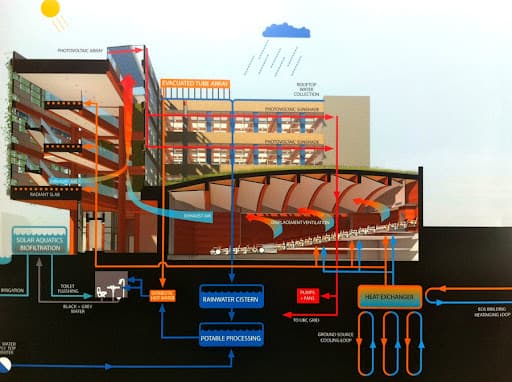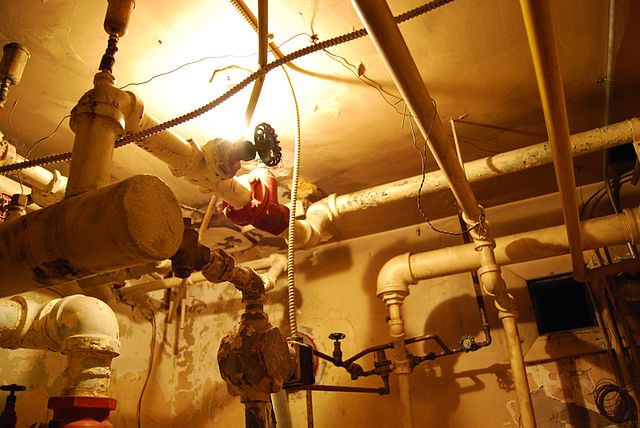Key Information About Your House's Plumbing System Anatomy
Key Information About Your House's Plumbing System Anatomy
Blog Article
Everyone seems to have their unique idea about The Inner Workings of Your Home's Plumbing.

Recognizing just how your home's plumbing system works is essential for each home owner. From supplying clean water for alcohol consumption, food preparation, and bathing to safely getting rid of wastewater, a well-kept plumbing system is essential for your family members's health and wellness and convenience. In this detailed overview, we'll check out the elaborate network that comprises your home's plumbing and deal suggestions on upkeep, upgrades, and dealing with typical problems.
Intro
Your home's pipes system is greater than just a network of pipelines; it's a complex system that ensures you have accessibility to tidy water and effective wastewater elimination. Understanding its parts and just how they work together can aid you avoid expensive repair work and ensure whatever runs efficiently.
Fundamental Components of a Plumbing System
Pipelines and Tubes
At the heart of your plumbing system are the pipelines and tubing that lug water throughout your home. These can be made from different materials such as copper, PVC, or PEX, each with its benefits in regards to longevity and cost-effectiveness.
Fixtures: Sinks, Toilets, Showers, and so on.
Fixtures like sinks, commodes, showers, and bathtubs are where water is made use of in your house. Understanding just how these fixtures attach to the plumbing system aids in identifying problems and preparing upgrades.
Shutoffs and Shut-off Factors
Shutoffs manage the circulation of water in your plumbing system. Shut-off valves are important throughout emergency situations or when you need to make repair services, enabling you to separate parts of the system without disrupting water circulation to the whole house.
Water System
Key Water Line
The main water line links your home to the metropolitan water supply or a personal well. It's where water enters your home and is dispersed to numerous fixtures.
Water Meter and Stress Regulator
The water meter steps your water use, while a stress regulator guarantees that water moves at a secure pressure throughout your home's pipes system, stopping damages to pipelines and components.
Cold Water vs. Warm water Lines
Understanding the distinction in between cold water lines, which provide water directly from the main, and warm water lines, which lug warmed water from the water heater, assists in fixing and planning for upgrades.
Drain System
Drain Pipes Piping and Traps
Drain pipelines carry wastewater away from sinks, showers, and bathrooms to the sewer or septic system. Catches protect against sewage system gases from entering your home and additionally catch debris that could trigger blockages.
Air flow Pipes
Air flow pipelines allow air into the drainage system, protecting against suction that might slow down drain and trigger traps to empty. Correct air flow is essential for maintaining the honesty of your pipes system.
Importance of Proper Water Drainage
Guaranteeing proper water drainage prevents back-ups and water damages. Regularly cleansing drains pipes and preserving traps can prevent expensive repairs and prolong the life of your pipes system.
Water Heating Unit
Types of Hot Water Heater
Water heaters can be tankless or conventional tank-style. Tankless heaters warmth water as needed, while storage tanks store heated water for prompt usage.
Just How Water Heaters Connect to the Plumbing System
Comprehending exactly how water heaters connect to both the cold water supply and warm water circulation lines helps in diagnosing concerns like not enough hot water or leakages.
Maintenance Tips for Water Heaters
On a regular basis flushing your hot water heater to remove debris, inspecting the temperature level setups, and inspecting for leakages can extend its life-span and improve power efficiency.
Common Pipes Concerns
Leaks and Their Causes
Leakages can happen due to maturing pipelines, loose installations, or high water pressure. Addressing leakages immediately prevents water damage and mold development.
Clogs and Obstructions
Clogs in drains pipes and bathrooms are often triggered by flushing non-flushable products or a build-up of grease and hair. Making use of drainpipe screens and being mindful of what drops your drains can prevent blockages.
Indications of Pipes Issues to Watch For
Low tide pressure, sluggish drains, foul odors, or unusually high water costs are indications of possible plumbing troubles that must be addressed immediately.
Pipes Maintenance Tips
Normal Inspections and Checks
Arrange annual pipes examinations to capture problems early. Seek indicators of leaks, rust, or mineral accumulation in faucets and showerheads.
DIY Upkeep Tasks
Straightforward tasks like cleaning tap aerators, checking for bathroom leakages using dye tablets, or protecting revealed pipes in cold environments can stop major plumbing concerns.
When to Call a Professional Plumbing Professional
Know when a plumbing problem calls for professional expertise. Attempting complex repair work without correct expertise can result in more damage and greater fixing costs.
Upgrading Your Pipes System
Factors for Updating
Updating to water-efficient components or changing old pipelines can boost water quality, minimize water costs, and enhance the value of your home.
Modern Pipes Technologies and Their Advantages
Discover technologies like smart leak detectors, water-saving toilets, and energy-efficient hot water heater that can save cash and reduce environmental impact.
Expense Factors To Consider and ROI
Calculate the in advance expenses versus long-lasting financial savings when taking into consideration plumbing upgrades. Many upgrades pay for themselves with decreased utility bills and fewer repair work.
Ecological Impact and Conservation
Water-Saving Fixtures and Devices
Mounting low-flow taps, showerheads, and toilets can significantly reduce water use without sacrificing performance.
Tips for Reducing Water Usage
Straightforward habits like dealing with leakages immediately, taking shorter showers, and running full loads of laundry and meals can save water and lower your energy costs.
Eco-Friendly Pipes Options
Take into consideration sustainable plumbing materials like bamboo for floor covering, which is durable and eco-friendly, or recycled glass for kitchen counters.
Emergency situation Preparedness
Steps to Take Throughout a Plumbing Emergency
Know where your shut-off shutoffs lie and how to switch off the water system in case of a burst pipeline or major leak.
Importance of Having Emergency Situation Contacts Useful
Keep call info for local plumbers or emergency solutions easily offered for fast response throughout a plumbing situation.
DIY Emergency Situation Fixes (When Applicable).
Momentary solutions like utilizing air duct tape to patch a dripping pipe or positioning a bucket under a leaking tap can minimize damage till an expert plumbing technician arrives.
Verdict.
Recognizing the anatomy of your home's pipes system encourages you to preserve it properly, saving time and money on repair services. By adhering to normal upkeep regimens and staying notified concerning modern pipes technologies, you can ensure your plumbing system operates successfully for several years to come.
HOW YOUR PLUMBING SYSTEM WORKS
Which Pipes Do What?
Blue lines = fresh water supply entering the building
Red lines = hot water supply entering the building
Grey lines = pipes carrying waste away from the building and venting pipes carrying gases away from the building (through the roof)
YOUR MAIN PLUMBING SYSTEMS
There are two main plumbing systems that support your home s basic plumbing needs one that brings clean water into your home, and one that sends dirty water away from your home. Connected to the toilet, bath, shower, and other faucets in your home, these two systems keep your water flowing in the right directions.
ACCESSING FRESH WATER
Fresh and clean water is brought into your home through the main water supply line . Filtered through one pipe, this water is pressured to flow into the various fixtures in your home at any given time.
This water can be sourced from a well located on your property, a pond or river (mostly cottages), or, as in most cases, from the city s municipal water treatment centre. However, it is important to note that water that is untreated, such as the water siphoned from ponds or rivers, may not be safe to drink. Personal water supplies always need to be treated for hardness and contaminants before consumed.
MUNICIPAL WATER SUPPLIES
Improve taste and odour
Remove sediment
Eliminate hardness
Reduce chlorine
COLD WATER SUPPLY VS. HOT WATER SUPPLY
Cold water flows into your home or building through the service line, which then distributes hot or cold water to your fixtures. This line is most commonly run through a central column that runs floor to floor. Hot water runs in short and straight pipes as the longer the pipeline, the more heat that will be lost in the transfer. Having shorter pipes also allows residents to access hot water more quickly.
WASTE WATER SYSTEM
Your wastewater system is divided into two parts pipes that send wastewater away from your home and venting pipes that send sewer gas away from your home. Sewage water travels through pipes that flush the water and waste towards local sewers that are operated and managed by your city or town. Most sewer systems rely on gravity to move the wastewater to where it needs to go.
The further away from your toilet or sink, the larger wastewater pipes become. This allows for waste to be disposed of from various parts of your home or business at once without pipe blockages. The angle and flow of these pipes are also essential for keeping your waste pipes clear of build up.
https://harrisplumbing.ca/how-your-home-plumbing-system-works/

HOW YOUR PLUMBING SYSTEM WORKS
Which Pipes Do What?
YOUR MAIN PLUMBING SYSTEMS
There are two main plumbing systems that support your home s basic plumbing needs one that brings clean water into your home, and one that sends dirty water away from your home. Connected to the toilet, bath, shower, and other faucets in your home, these two systems keep your water flowing in the right directions.
ACCESSING FRESH WATER
Fresh and clean water is brought into your home through the main water supply line . Filtered through one pipe, this water is pressured to flow into the various fixtures in your home at any given time.
This water can be sourced from a well located on your property, a pond or river (mostly cottages), or, as in most cases, from the city s municipal water treatment centre. However, it is important to note that water that is untreated, such as the water siphoned from ponds or rivers, may not be safe to drink. Personal water supplies always need to be treated for hardness and contaminants before consumed.
MUNICIPAL WATER SUPPLIES
COLD WATER SUPPLY VS. HOT WATER SUPPLY
Cold water flows into your home or building through the service line, which then distributes hot or cold water to your fixtures. This line is most commonly run through a central column that runs floor to floor. Hot water runs in short and straight pipes as the longer the pipeline, the more heat that will be lost in the transfer. Having shorter pipes also allows residents to access hot water more quickly.
WASTE WATER SYSTEM
Your wastewater system is divided into two parts pipes that send wastewater away from your home and venting pipes that send sewer gas away from your home. Sewage water travels through pipes that flush the water and waste towards local sewers that are operated and managed by your city or town. Most sewer systems rely on gravity to move the wastewater to where it needs to go.
The further away from your toilet or sink, the larger wastewater pipes become. This allows for waste to be disposed of from various parts of your home or business at once without pipe blockages. The angle and flow of these pipes are also essential for keeping your waste pipes clear of build up.
https://harrisplumbing.ca/how-your-home-plumbing-system-works/
I'm very taken with and I am hoping you liked our blog post. Are you aware of somebody else who is involved in The Inner Workings of Your Home's Plumbing? Do not hesitate to share it. Many thanks for your time invested reading it.
Start Now Report this page